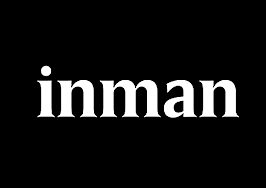- As millennials’ incomes improve, but barriers like student loan debt and marginal credit histories continue to keep thousands renting, demand is growing for an alternative to QM loans.
In survey after survey, frustrated first-time buyers rank getting qualified for a mortgage among the top barriers that keep them from owning a home. After years of limited options, buyers with less than good credit but the commitment to improve will finally get a break.
Despite conventional wisdom to the contrary, lending standards for mortgages to buy a home have barely budged over the past three years.
Since December 2014, the average FICO score for mortgages has declined only six points, from 728 to 722 in December 2017.
The average FICO for an FHA purchase mortgage is only one point lower today than it was four years ago (680 to 681), and the average FICO for conventional loans is only two points lower today than it was then (753 to 751).
Front and back end debt-to-income ratios also have similarly improved no more than two points, which is one reason young buyers with student loan debt continue to struggle.
How the QM Rule changed mortgage lending
Among the federal regulatory reforms enacted in recent years to protect consumers from the abuses that led to the housing crash was a new category of mortgages called “Qualified Mortgage” (QM).
QM mortgages are designed to add an additional level of protection to lenders and investors. They quickly became the industry standard because QM loans reduce lenders’ liability, can be automatically underwritten and are easier to sell to Fannie and Freddie.
QM loans cannot have features like interest-only payments, negative amortization or balloon payments. Fees and points are limited to 3 percent of the principal and generally are not available to borrowers with debt-to-income ratios higher than 43 percent, which leaves out many buyers with student loan debt.
Perhaps QM loans’ most significant benefit to lenders is the ease with which they can be securitized. The collapse of private-label mortgage-backed securities markets following the housing crash has left most lenders with the only options of selling their loans to the GSEs or retaining them.
A boon in non-QM loans?
In the recent past, non-QM loans have been subject to heightened regulatory requirements and risk, reducing the willingness of banks to make non-QM loans to even the most creditworthy borrowers.
From 2015 to 2016, for example, the non-QM share of mortgages dropped from 14 percent to 9 percent, according to an ABA survey, and future growth will more likely come from smaller lenders who dedicated to the category and more able to manage risk.
As millennials’ incomes improve, but barriers like student loan debt and marginal credit histories continue to keep thousands renting, demand is growing for an alternative to QM loans.
With recent improvements in risk management and new federal regulatory protections that apply to all mortgages, such as the ability-to-pay, non-QM lending becomes more attractive to established lenders.
Recently S&P Global Ratings predicted the market for non-QM loans would double or triple in 2018 because of the pent-up demand from borrowers who have been passed over for traditional loans.
A good example is Carrington Mortgage Services, which started life as a servicer of high-stress loans during the bottom of the bust and has grown to be a full-service real estate company.
Carrington recently announced a new package of proprietary mortgage products for borrowers who don’t fit the traditional credit box.
These new loans are for buyers with lower credit scores, who are self-employed or who have had a recent credit event such as foreclosure, bankruptcy or even a late mortgage payment and may not be eligible for conventional loans, government-insured loans such as FHA and VA or direct loans from FHA or USDA.
“We estimate that about 100 million people have FICO scores lower than 650,” said Carrington President Ray Brousseau.
Brousseau said that of those Carrington does business with who have credit scores under 650, about 73 percent are first-time homebuyers.
Introducing these products is the next evolutionary step in Carrington’s ongoing commitment to serving underserved borrowers across the country, he said.
“Working with under-served buyers is not a part-time job for us, it’s not something we do to make up for a temporary down turn in the market.
“We are known as a lender who can get that loan closed for someone who has less than perfect credit,” said Brousseau, who noted that the new loan products designed for the non-QM market could significantly expand businesses for brokers and agents.
With a new administration in Washington focused on reducing regulation, growing demand from young families and lenders committed to the non-QM market, could the time be right for a non-QM boom?
Steve Cook is a communications consultant and editor of Real Estate Economy Watch.






